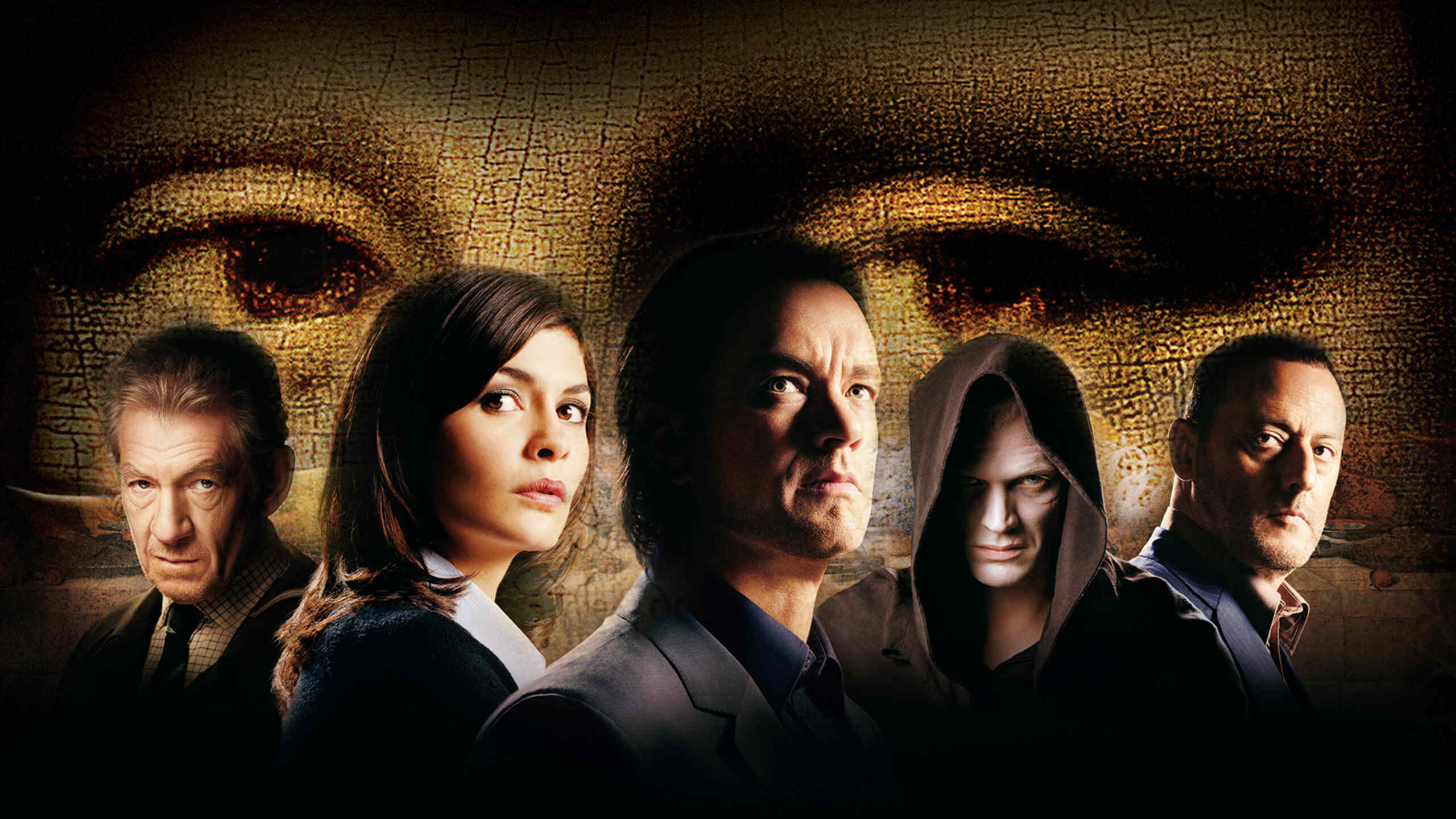
30 Facts about the movie The Da Vinci Code
The Da Vinci Code, directed by Ron Howard and based on Dan Brown’s bestselling novel of the same name, is a thrilling mystery that captivated audiences around the world. Released in 2006, this film follows the journey of symbologist Robert Langdon, played by Tom Hanks, as he unravels the secrets hidden within the works of Leonardo da Vinci.
In this article, we will delve into 30 fascinating facts about The Da Vinci Code that will give you a deeper appreciation for the film and its production. From the extensive research conducted by the filmmakers to the controversy surrounding its release, there is much to discover about this iconic cinematic experience. So, grab your cryptex and join us on this adventure into the enigmatic world of The Da Vinci Code!
Key Takeaways:
- “The Da Vinci Code” movie, based on the bestselling novel, captivated audiences with its thrilling storyline, star-studded cast, and controversial take on religious history, sparking worldwide discussions and becoming a cultural phenomenon.
- The movie’s blend of historical facts and fictional storytelling, stunning visual effects, and exploration of secret societies and hidden secrets led to its commercial success and continued popularity, captivating audiences across the globe.
The Da Vinci Code is based on the bestselling novel by Dan Brown.
Adapted from Dan Brown’s thrilling novel, The Da Vinci Code took the world by storm when it was released in 2006.
The movie stars Tom Hanks as the lead character, Robert Langdon.
Tom Hanks delivers a captivating performance as the renowned symbologist Robert Langdon, who finds himself embroiled in a dangerous mystery.
The movie was directed by Ron Howard.
Ron Howard brings the intricate storyline to life with his masterful direction, creating a film that keeps audiences on the edge of their seats.
The Da Vinci Code was filmed in various locations across Europe.
From the stunning streets of Paris to the ancient halls of Westminster Abbey, the movie transports viewers into a visually captivating world.
The film faced controversy for its fictional interpretation of religious history.
The Da Vinci Code sparked debates and discussions on religious beliefs due to its fictionalized portrayal of historical events and religious symbolism.
The movie grossed over $750 million worldwide.
With its captivating storyline and star-studded cast, The Da Vinci Code became a box office success, captivating audiences around the globe.
The movie features an ensemble cast including Audrey Tautou and Ian McKellen.
Audrey Tautou impresses as Sophie Neveu, while Ian McKellen brings depth to the character of Sir Leigh Teabing, adding to the film’s allure.
The soundtrack of the movie was composed by Hans Zimmer.
Hans Zimmer’s mesmerizing score adds an extra layer of intensity and mystery to the film, perfectly complementing the suspenseful storyline.
The Da Vinci Code was nominated for multiple awards.
The film received nominations for various accolades, including Best Original Score at the Academy Awards and Best Thriller at the Saturn Awards.
The success of the movie led to a sequel, Angels & Demons.
The popularity of The Da Vinci Code prompted the production of a sequel, further delving into the thrilling world of Robert Langdon’s adventures.
The movie sparked an increase in tourism to the sites featured in the story.
After the release of The Da Vinci Code, there was a surge in tourism to locations like the Louvre Museum and Rosslyn Chapel, depicted in the film.
The Da Vinci Code was both praised and criticized by literary scholars.
While the novel and film captivated audiences worldwide, some scholars argued against its historical accuracy and fictionalized interpretations.
The movie features a blend of historical facts and fictional storytelling.
The Da Vinci Code weaves together real historical events and mysteries with the imaginative narrative created by Dan Brown.
The film’s release was met with protests in certain countries.
Due to the controversial nature of the storyline, The Da Vinci Code faced protests and boycotts in countries where religious sentiments were particularly strong.
The Da Vinci Code became a cultural phenomenon.
The movie’s release sparked worldwide discussions on art, history, and religion, firmly establishing its place in popular culture.
The movie explores the concept of secret societies.
The Da Vinci Code delves into the hidden world of secret societies and their influence on historical events, adding another layer of intrigue to the story.
The movie showcases stunning visual effects.
From the intricate puzzle-solving sequences to the breathtaking locations, The Da Vinci Code immerses viewers in a visually stunning cinematic experience.
The story of The Da Vinci Code revolves around a hidden secret.
Robert Langdon embarks on a perilous journey to unravel a hidden secret that has the potential to shake the foundations of religious history.
The Da Vinci Code became one of the highest-grossing movies of 2006.
The film’s commercial success solidified its place as one of the most popular movies of that year, captivating audiences from all walks of life.
The Da Vinci Code has been translated into 44 languages.
Dan Brown’s novel, on which the movie is based, has been translated into numerous languages, further expanding its global reach.
The movie features cryptic puzzles and codes.
The Da Vinci Code keeps viewers engaged with its intricate puzzles and codes, adding a sense of mystery and suspense throughout the film.
The movie’s release led to an increased interest in art history.
With its focus on art and symbolism, The Da Vinci Code sparked a newfound passion for art history and the hidden meanings behind famous artworks.
The movie explores the theme of divine femininity.
The Da Vinci Code delves into the idea of divine femininity and the role of women in religious history, presenting an alternative perspective.
The movie’s iconic scene takes place in the Louvre Museum.
One of the most memorable moments in The Da Vinci Code occurs when Robert Langdon investigates a murder in the iconic Louvre Museum in Paris.
The movie features a race against time.
As Robert Langdon unravels the secrets and hidden clues, he finds himself in a thrilling race against time to solve the intricate puzzle.
The Da Vinci Code has a dedicated fan base.
The film has garnered a loyal fan base who continue to appreciate its thought-provoking storyline and intricate plot twists.
The movie explores the concept of sacred geometry.
The Da Vinci Code delves into the mathematical principles of sacred geometry and its alleged significance in the secrets of the ancient world.
The movie adapts the suspenseful elements of a thriller.
The Da Vinci Code incorporates elements of a thrilling suspense story, keeping viewers guessing until the very end.
The movie explores the blending of fact and fiction.
The Da Vinci Code blurs the lines between historical fact and fictional storytelling, creating an intriguing and thought-provoking narrative.
The Da Vinci Code continues to captivate audiences today.
Even years after its release, The Da Vinci Code remains as compelling and engaging as ever, attracting new viewers and retaining its place as a classic in the genre.
Conclusion
The Da Vinci Code is not just a movie; it’s an experience. From its intriguing storyline to its breathtaking cinematography, this film manages to captivate and entertain viewers from start to finish. Whether you’re a fan of mystery thrillers, historical conspiracies, or simply enjoy a well-crafted film, The Da Vinci Code is definitely worth watching. Its thought-provoking themes and complex characters make it a movie that lingers in your mind long after the credits roll. So if you haven’t already, grab your popcorn, dim the lights, and let The Da Vinci Code take you on an unforgettable cinematic journey.
FAQs
Q: Is The Da Vinci Code based on a true story?
A: While The Da Vinci Code is based on historical elements and conspiracy theories, it is a work of fiction and not a true story.Q: Who directed The Da Vinci Code?
A: The Da Vinci Code was directed by Ron Howard, known for his exceptional storytelling skills.Q: Who stars in The Da Vinci Code?
A: The film features an ensemble cast, including Tom Hanks as Robert Langdon, Audrey Tautou as Sophie Neveu, and Ian McKellen as Sir Leigh Teabing.Q: What is the central theme of The Da Vinci Code?
A: The central theme revolves around religious conspiracies, ancient symbols, and the search for hidden truths.Q: Are there any sequels or prequels to The Da Vinci Code?
A: Yes, there is a prequel titled “Angels & Demons” and a sequel titled “Inferno,” both based on Dan Brown’s novels of the same name.Q: Did The Da Vinci Code receive any awards?
A: Yes, the film received multiple award nominations and won several accolades for its mesmerizing performances and gripping storytelling.Q: Can I visit the locations featured in The Da Vinci Code?
A: Yes, many of the locations featured in the movie, such as the Louvre Museum in Paris, are open to the public and can be visited.Q: Is there a message or moral lesson in The Da Vinci Code?
A: The film raises thought-provoking questions about religion, history, and the power of secrets, allowing viewers to contemplate their own beliefs and values.Q: Can I watch The Da Vinci Code with my family?
A: The Da Vinci Code is rated PG-13 for some intense sequences of violence and disturbing images, so it is advisable to use parental discretion.Q: Does The Da Vinci Code follow the events of the book accurately?
A: While there are some differences between the movie and the book, The Da Vinci Code stays true to the essence of the story and retains its thrilling elements.
Was this page helpful?
Our commitment to delivering trustworthy and engaging content is at the heart of what we do. Each fact on our site is contributed by real users like you, bringing a wealth of diverse insights and information. To ensure the highest standards of accuracy and reliability, our dedicated editors meticulously review each submission. This process guarantees that the facts we share are not only fascinating but also credible. Trust in our commitment to quality and authenticity as you explore and learn with us.


